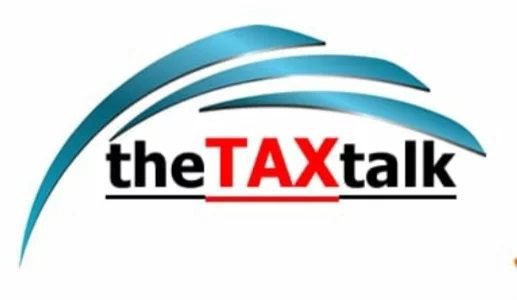![]()
TDS on GST: Whether Tax Should Be Deducted on Gross Amount or GST-Exclusive Amount? A Complete Analysis under Sections 194C and 194J of the Income Tax Act, 1961
The question “Should TDS be deducted on the amount including GST or excluding GST?” continues to confuse businesses, accountants and even tax officers.
Though CBDT has issued a clear circular, practical controversies still arise-particularly in cases of composite contracts under section 194C. This article explains the correct legal position, the interpretational issues, and the practical view adopted across India.
1. Why is the issue important?Invoices today include GST separately. If TDS is wrongly deducted on the total amount including GST, suppliers suffer excess deduction, reconciliation becomes difficult, and disputes arise during audits. On the other hand, deducting TDS wrongly on the GST-exclusive amount (when GST is not shown separately) may lead to short deduction and disallowances. Hence, clarity is crucial.
2. CBDT Circular No. 23/2017: The foundation of the law
CBDT Circular No. 23/2017 dated 19 July 2017 settled the core issue. It states that where GST on services is indicated separately, TDS under Chapter XVII-B must be deducted on the amount excluding GST. The rationale is simple: GST is not the income of the recipient; it is a statutory levy collected on behalf of the Government. Therefore, TDS should not apply on this component. This principle continues the same logic used in the earlier Service Tax regime.
3. How does this apply to Section 194J (professional/technical services)?Section 194J deals primarily with pure services-professional fees, technical fees, royalty, non-compete, etc. Since these are unambiguously services, the GST charged on the invoice is fully “GST on services.” Therefore, under 194J, the rule is universally accepted and undisputed: TDS must be deducted on the amount excluding GST, provided GST is shown separately. There is virtually no litigation or interpretational difficulty under section 194J on this issue.
4. Why is Section 194C (works contracts, job work, supply + service) more complicated?Section 194C covers contracts for work, labour, fabrication, repair, processing, and other composite activities. These activities often involve both goods and services. Example: A works contract may include raw material, labour, overheads and other components. In such cases, GST may not be strictly “GST on services” but GST on a composite supply. This creates a technical interpretational issue: CBDT circular excludes “GST on services.” But 194C invoices may include GST partly attributable to goods. Does the circular apply to such GST? Or should only the service portion be excluded?
5. Practical industry view: Full GST is excluded from TDS:
Across India, taxpayers, industries and professionals follow a consistent practical position: If GST is mentioned separately, the entire GST amount-irrespective of whether it relates to goods or services-is excluded from TDS. This is because: (a) GST is never income, whether on goods or on services; (b) TDS is intended to be deducted on income elements only; (c) It is practically impossible to bifurcate GST into service and goods elements in a composite contract; (d) CBDT’s intent is clearly to ensure TDS is not applied to GST; (e) Professional bodies like ICAI and major tax publishers have supported the full-exclusion interpretation.
6. Departmental view and field-level challengesWhile assessments generally accept GST-exclusive deduction, there have been occasional objections from field officers in works contract cases, arguing that the circular applies only to “GST on services.” However, these cases are rare and have not resulted in adverse appellate decisions. In fact, many CAG/state audit observations indicate that some government departments still deduct TDS on the gross amount including GST-highlighting the confusion, but not establishing a legal position.
7. GST must be shown separately: The deciding factorThe single most crucial requirement is that GST must appear separatelyin the invoice. If GST is not shown separately-i.e., in the case of composite or all-inclusive billing-TDS must be deducted on the full amount because the GST component cannot be identified.
8. Judicial position so farThere is no judgment contradicting the CBDT circular. Tribunals and High Courts have consistently held that CBDT circulars are binding on the Department where they are beneficial to the assessee. Therefore, as long as GST is shown separately, TDS must be on the GST-exclusive amount-this is the legally safe and correct view.
9. Final position: What taxpayers should follow:
(1) Under section 194J: Always deduct TDS on the amount excluding GST.
(2) Under section 194C: Deduct TDS on the amount excluding GST provided GST is shown separately, even in composite contracts. This is the widely accepted and CBDT-consistent practice.
(3) If the invoice is GST-inclusive without break-up: Deduct TDS on the full amount.
10. Short answer:
As per CBDT Circular No. 23/2017, TDS should be deducted on the GST-exclusive amount if GST is shown separately in the invoice. This applies to both section 194C and 194J. GST is a statutory levy and not the income of the payee; therefore TDS must not be applied on GST.”
11. Conclusion:The law is clear: When GST is shown separately, TDS must be deducted on the amount excluding GST. The controversy mainly arises in 194C due to mixed supplies, but the practical and legally defensible position-supported by CBDT, ICAI and top tax publishers-is that GST should be fully excluded from the TDS base. This ensures correct compliance, avoids disputes and aligns with the principle that TDS applies only to income, not to indirect taxes.
The copy of the Circular is as under:


